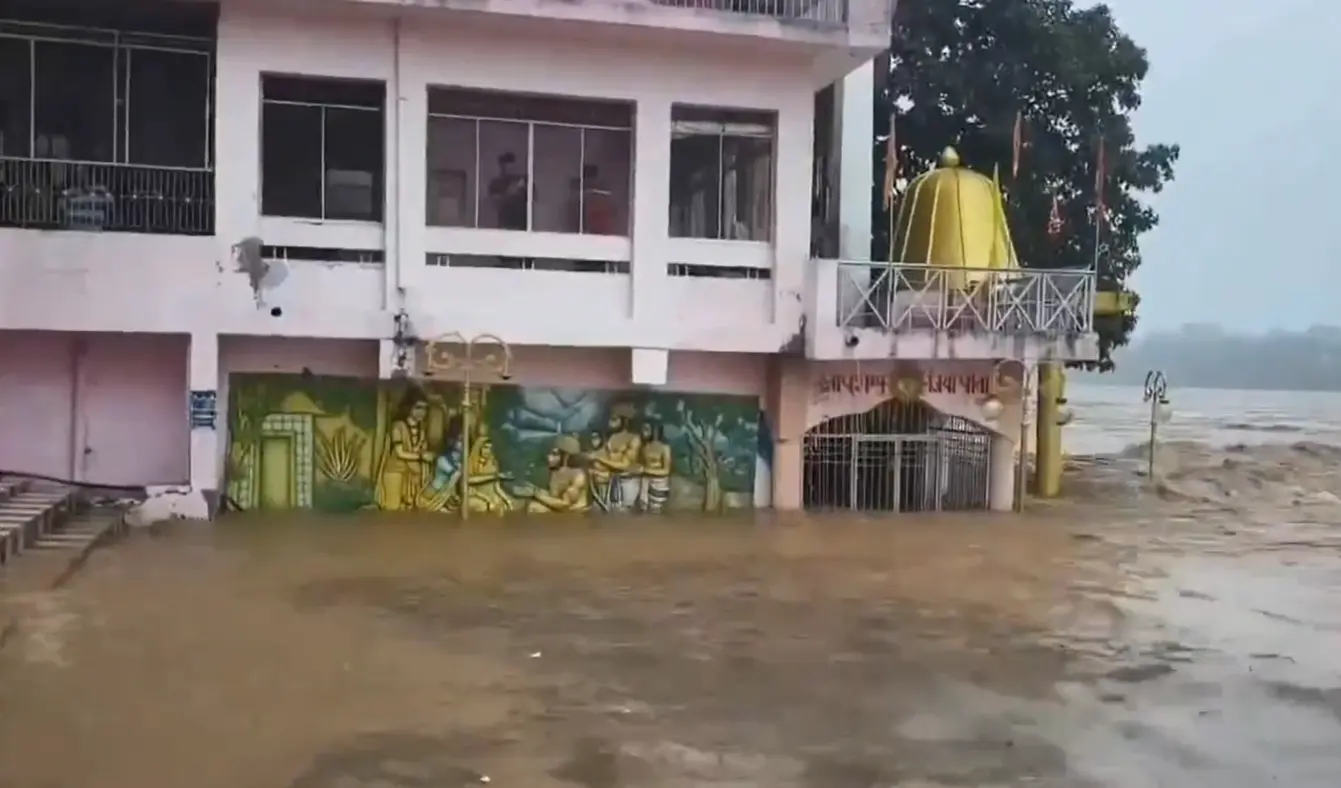
Flash floods hit Vaishno Devi pilgrimage route in Jammu, killing 10 and injuring many
Sudden Disaster Strikes Devotees on Sacred Path
Flash Floods Hit Vaishno Devi – On August 26, 2025, a peaceful pilgrimage turned into a nightmare when a sudden landslide and flash flood hit the route to the famous Vaishno Devi shrine in Jammu and Kashmir. Heavy rains had been pounding the region for days, but around 3 p.m., the situation worsened dramatically.
A massive landslip occurred near Inderprastha Bhojnalaya at Adhkwari, halfway along the 12-km trek from Katra to the shrine. Stones, boulders, and mud came crashing down the Trikuta hills, catching hundreds of pilgrims off guard. At least 10 people lost their lives, including six pilgrims, and 14 others were injured. Rescue teams rushed to the scene, but several people were still feared trapped under debris.
The pilgrimage was immediately suspended, and authorities closed both the Himkoti and old traditional routes to prevent further casualties. Eyewitnesses described scenes of panic and chaos, with people running for safety as rocks tumbled down the slopes.
Rescue Efforts and Emergency Response
Rescue operations began within minutes, led by the CRPF, SDRF, and local police, along with shrine board officials. Despite difficult terrain and ongoing rain, teams worked tirelessly to locate survivors and clear the path.
Chief Minister Omar Abdullah expressed deep sorrow over the tragedy and announced that he would personally visit Jammu to monitor the situation. He also spoke with Union Home Minister Amit Shah, who assured full support from the central government, including the deployment of NDRF teams.
Hospitals in Katra and Jammu were placed on high alert to treat the injured. Emergency helplines were activated, and food, water, and shelter were arranged for stranded pilgrims. The administration also restricted night movement in flood-prone areas and ordered the closure of schools across the region.
Travel Chaos: Roads and Railways Disrupted
The flash floods didn’t just affect the shrine route, they caused widespread damage across Jammu. Rivers like the Tawi and Chenab overflowed, submerging low-lying areas and damaging homes, bridges, and roads. Landslides blocked the Jammu-Srinagar and Kishtwar-Doda highways, cutting off key routes for relief and travel.
Train services were also hit hard. The Indian Railways cancelled 18 trains, including major routes connecting Katra to Delhi, Bhopal, and Chennai. Tracks were damaged due to soil erosion, especially near the Chakki River in Pathankot, forcing authorities to suspend traffic between Jammu Tawi and Shri Mata Vaishno Devi Katra.
Mobile and internet services were disrupted in many areas, making communication difficult. Telecom operators reported damage to fibre lines, leaving thousands without connectivity during the emergency.
A Call for Caution and Preparedness
The Vaishno Devi tragedy is a reminder of how vulnerable hilly regions are during extreme weather. While the shrine is one of India’s most visited religious sites, the steep terrain and unpredictable climate make it risky during monsoon season.
Officials have urged pilgrims to avoid travel during heavy rains and to follow weather advisories strictly. The Shrine Board is now reviewing safety protocols and considering improvements to infrastructure, including better shelters, drainage systems, and early warning alerts.
As rescue operations continue and families mourn their loved ones, the focus shifts to rebuilding and preparing for future emergencies. Nature’s fury may be unpredictable, but with better planning and awareness, such tragedies can be minimized.
Also read – Tragedy in the Hills: Flash Floods Ravage Himachal, Dozens Feared Missing Near Hydroelectric Project
Himachal’s Monsoon Fury: 51 Dead, 22 Missing as Floods Cripple State and Rescue Ops Intensify
Stay updated with latest updated news blogs on Rapido Updates.